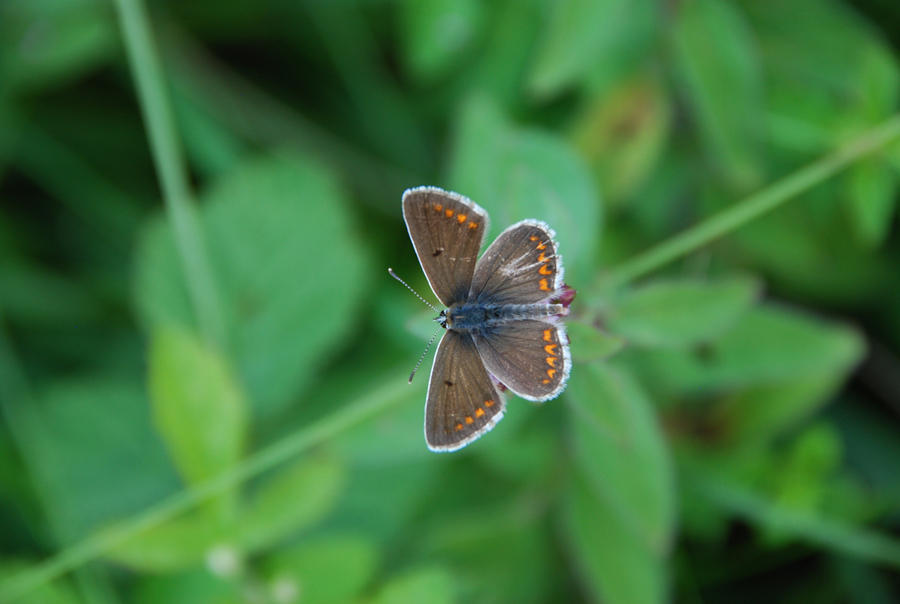Study over 200 years highlights steady loss of butterfly species
Nature conservation areas no haven for butterflies

The study is based on one of the longest observation series ever carried out. Species lists and butterfly collections from 1840 until today were evaluated. All of the data were provided by lepidopterologists, i.e. butterfly researchers, from areas around the city of Regensburg in Bavaria. The southern slopes along the Danube there mainly consist of rare oligotrophic grasslands and, accordingly, oligotrophic biotopes for butterflies and other insects. Around 45 hectares of land there have been designated as a conservation area since 1992.
The institutes involved in the study included beside TUM and ZSM also the Senckenberg German Entomological Institute, and Nicolaus Copernicus University Torun, Poland. The results of the collaborative study were published in the American journal Conservation Biology.
Habitat specialists most vulnerable
“The observations carried out over a period of 200 years confirm the general trend of a decline in habitat specialist species despite the fact that these species are the target of nature conservation measures,” explains Dr. Jan Christian Habel from TUM’s Terrestrial Ecology Research Group. For example whereas 117 butterfly species and diurnal moths were recorded between 1840 and 1849, only 71 species were recorded between 2010 and 2013.
Moreover, the composition of the butterfly species also changed. While the region was populated by a diverse butterfly community during the past, it is now dominated by a few habitat generalists. Many habitat specialists, which require certain larval host plants and habitat structures to survive, have disappeared.
Overfertilization ousts larval host plants
According to the study, high emissions of reactive nitrogen is one of the reasons of this species decline. Reactive nitrogen is generated, for example, by the combustion of the fossil fuels wood and peat, industrial incineration processes, the cultivation of legumes, and the increasingly intensive agriculture of recent decades. Nitrogen alters the nutrient composition of plants by the airborne route and overfertilizes the very sensitive type of vegetation found in this region.
But the flora and fauna there are adapted to a low-nutrient environment. The high nitrogen supply promotes the growth of plants like the dandelion, thistles, and sorrel, which oust the typical flora and, hence also, larval host plants. “These changes in the environment have a very serious impact on the habitat specialists,” says the biogeographer from TUM.
Nature conservation areas largely ineffective
“Most conservation areas are very small and isolated and sparsely distributed in the landscape,” says Habel – “Moreover, atmospheric nitrogen does not respect the boundaries of the protected areas.”
According to the study, despite climate warming, thermophilic species, which like warm and dry conditions, are also in decline. This may seem surprising to non-experts.” The vegetation is growing faster due to the nitrogen inputs. This creates more shade close to the ground, which is too much shade for heat-loving butterflies,” explains Habel. Because the observations used for the study were recorded using very different methods by the scientists involved, they could only be used as records of the presence and disappearance of the recorded species. It was not possible to calculate species abundances and population densities and development in relation to abundance.
“The question that emerges here is whether the established network of fauna-flora habitat conservation areas will enable us to achieve effective nature conservation in the long term,” adds Dr. Habel. “The answer is clearly no.”
Publication
Jan Christian Habel, Andreas Segerer , Werner Ulrich, Olena Torchyk, Wolfgang W. Weisser und Thomas Schmitt: Butterfly community shifts over 2 centuries, Conservation Biology 2016. DOI: 10.1111/cobi.12656
Contact:
Dr. Jan Christian Habel
Technical University of Munich
Terrestrial Ecology Research Group
Department of Ecology and Ecosystem Management
Hans-Carl-von-Carlowitz-Platz 2
85354 Freising
Phone: +49.8161.71.4861
Dr. Habel is currently on a research expedition and can be contacted by email:
janchristianhabel@gmx.de